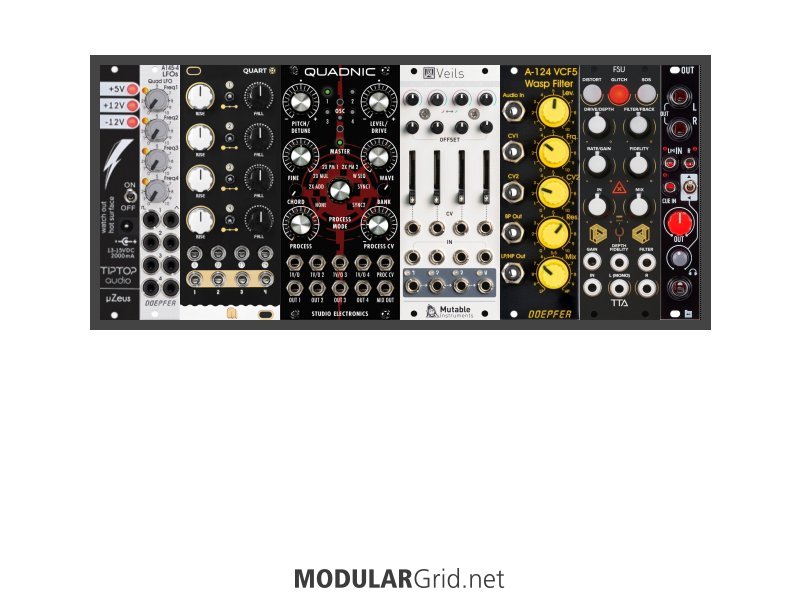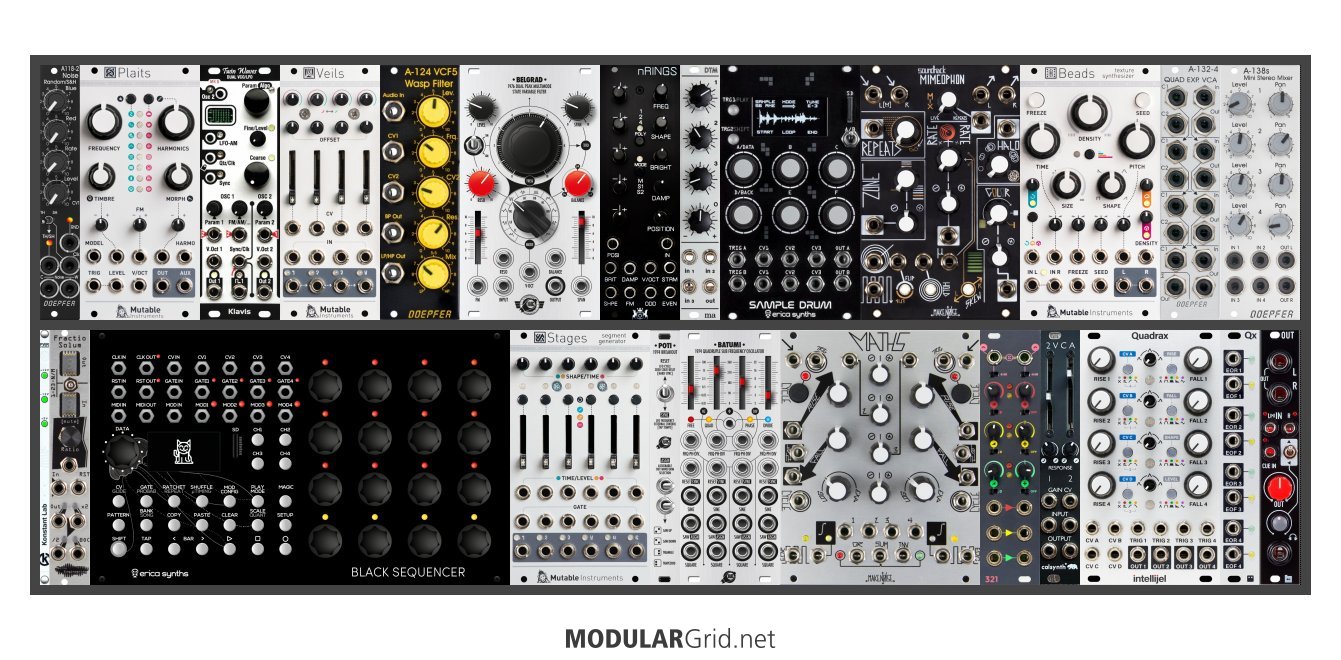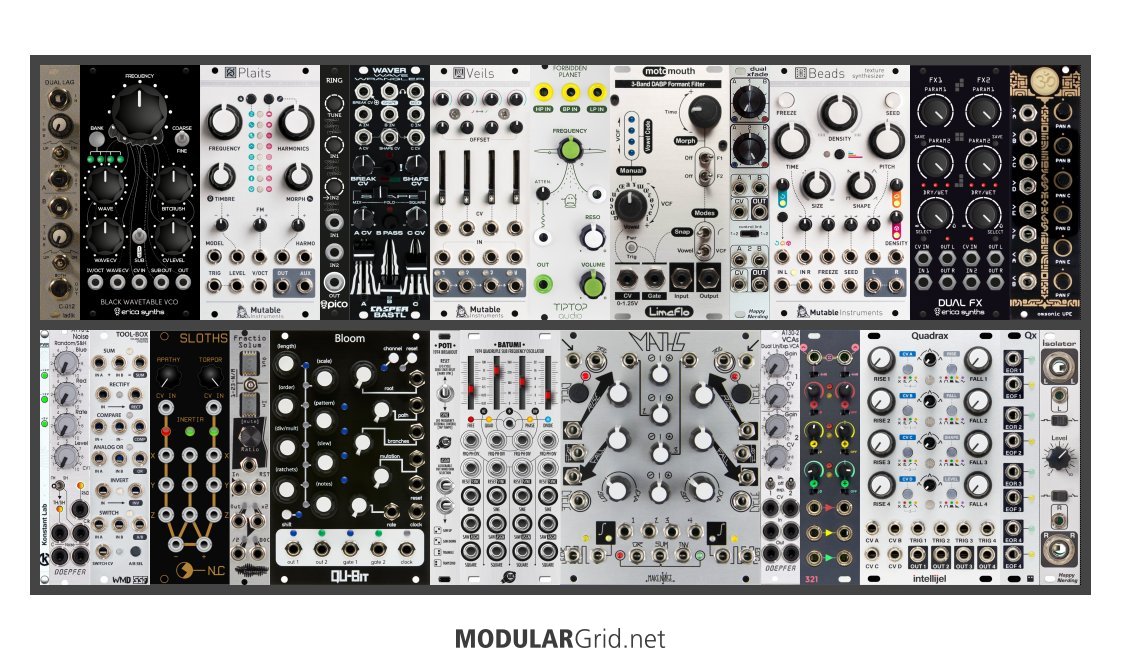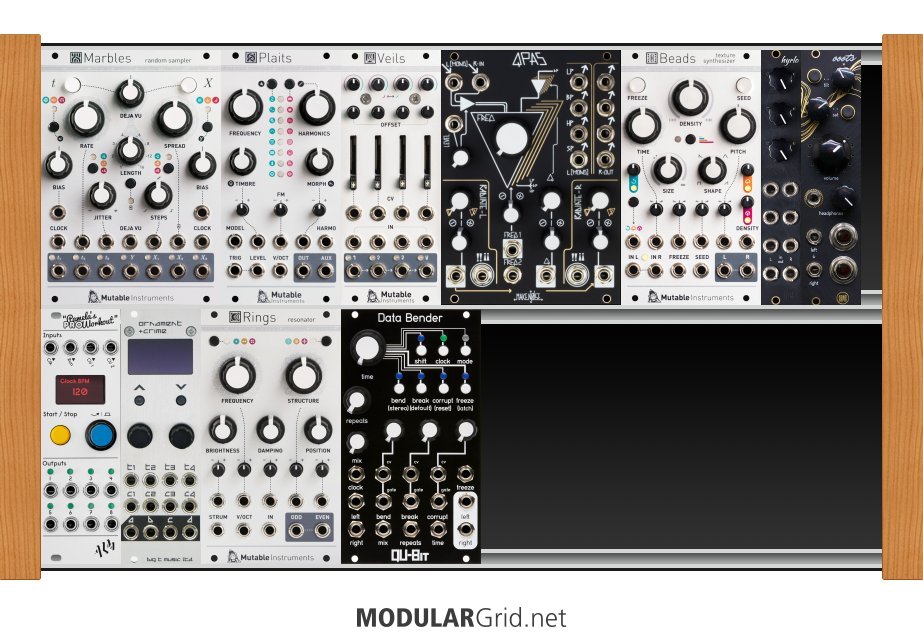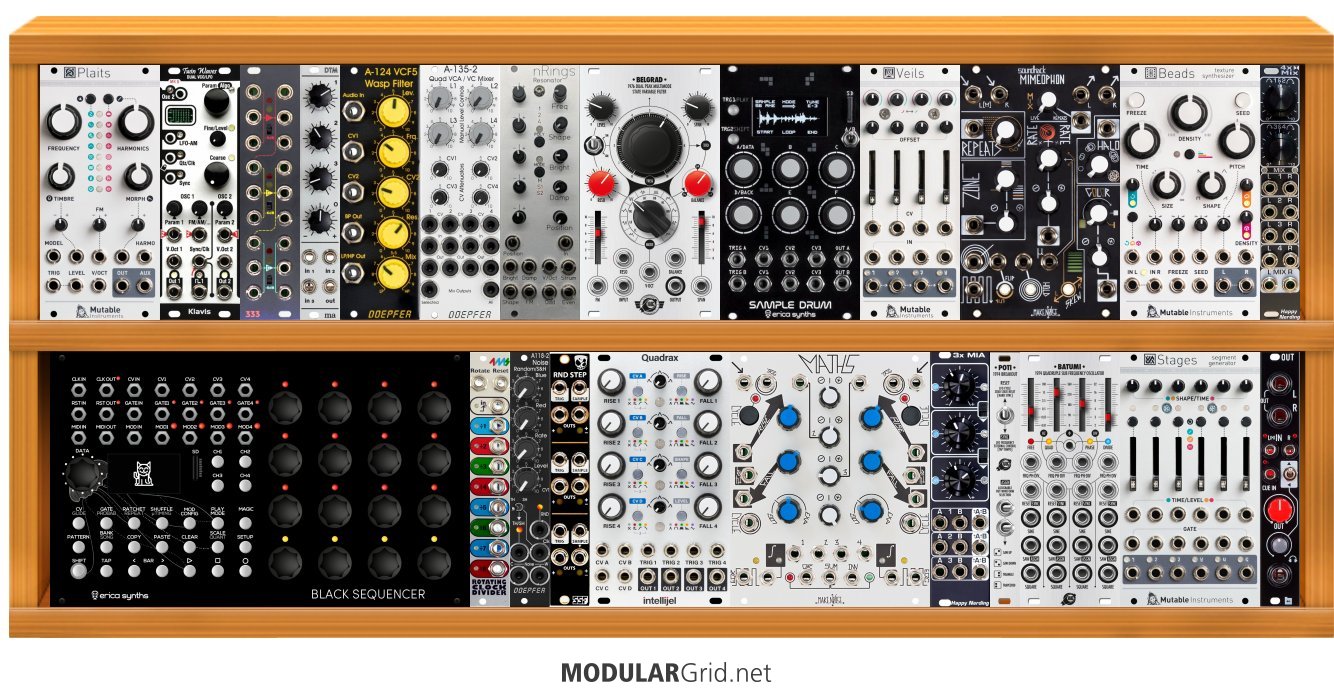ok I had a quick look at your jpg - urgh
@Lugia is 100% correct
too many sound sources, not enough sound processors, not enough modulation sources (or envelopes) - performer looks like it outputs gates - which are on/off envelopes generally used to open and determine the length of more complex envelopes, and definitely not enough utilities
look at the formula in my signature - it is the best way to get a balanced modular that offers the most versatility for the least expense
you have 7-9 sound sources, 3 sound modifiers etc etc
only 1 envelope and a fucking huge delay which takes up 1/2 a row nearly...
have a serious think about your mixing solutions including the i/o module
on the upper row - plaits is dual mono, as is the twin waves, rings is stereo ish, morphagene is stereo going into a wasp (mono) and a huge delay (stereo) and your have only an stmix to mix on that is 4 stereo ins + a stereo aux for the drum mixer - no panning of mono sound sources and no send/return - unless you count the vca - which isn't particularly useful for stereo mixing - and then you have no vcas for cv - not really up to the job
on the lower row - peaks (if used for drums) is dual mono, plonk is mono and you also have sample drum (not sure as no click through but probably mono) and fx aid which is stereo - again no panning or send/return for the mixer
and where are you getting a peaks from - used or cloned? as it's been discontinued for at least 3 years! everyhting else is at least kind of available - in production - but pandemic is fucking that up quite a bit still and for at least the next year!
on top of that there's no sub mixers to allow you to patch multiple sound sources to the same filter or combine modulation sources (a matrix mixer is good for this!!!)
and that's just scratching the surface of how flawed this rack is - nothing that really leverages the important reasons to go into modular - logic, sequential switches, wave shapers/folders/multipliers, ring mods, etc etc the list goes on
IMO it's a really boring use of 252hp - buy these modules and you'll either grow bored and think modular is shit and sell it - or end up having to buy a second case in 3 months - when you realise that @Lugia and I are correct and you really need the extra utilities to get this to actually function as you hoped it would
"some of the best base-level info to remember can be found in Jim's sigfile" @Lugia
Utility modules are the dull polish that makes the shiny modules actually shine!!!
sound sources < sound modifiers < modulation sources < utilities


